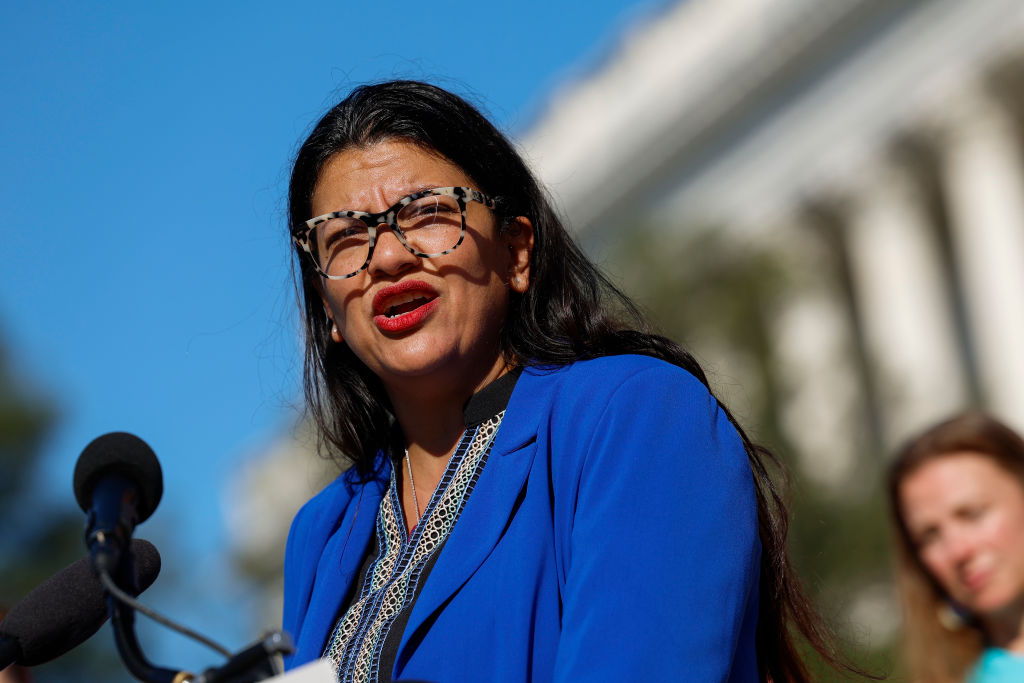Rashida Tlaib’s Plan to Combat Poverty – Jacobin

Report on the “Economic Dignity for All Agenda” and its Alignment with Sustainable Development Goals
A legislative framework titled the “Economic Dignity for All Agenda” (EDAA), proposed by Representative Rashida Tlaib, aims to establish a comprehensive system of economic security in the United States. The agenda, comprising three distinct bills, directly addresses key United Nations Sustainable Development Goals (SDGs), with a primary focus on SDG 1 (No Poverty) and SDG 10 (Reduced Inequalities). This report analyzes the components of the proposed legislation and its projected impact on these global development targets.
Analysis of Legislative Components
The EDAA is structured around three core legislative proposals designed to provide universal economic support across different life stages. The administration of these programs is designated to the Social Security Administration (SSA) to enhance efficiency and reduce administrative barriers, contributing to SDG 16 (Peace, Justice, and Strong Institutions) by creating more effective and inclusive institutions.
-
The Baby Bonus Act
This act proposes a one-time payment of $2,000 to families with a newborn child. The provision is designed to mitigate the economic insecurity often experienced around childbirth. By providing direct financial support, this bill aligns with:
- SDG 1 (No Poverty): Alleviating financial strain on new families, preventing a slide into poverty during a vulnerable period.
- SDG 3 (Good Health and Well-being): Allowing families to afford necessary care and supplies for a newborn, contributing to a healthy start in life.
-
The End Child Poverty Act (ECPA)
The ECPA seeks to replace the existing Child Tax Credit (CTC) and Earned Income Tax Credit (EITC) with a universal child allowance. Key features include:
- A universal monthly benefit for every child under nineteen, projected to be $469 per month ($5,630 annually) in 2026.
- Tax credits for single ($700) and joint ($1,400) filers aged 19-64.
- An additional $700 credit for adult dependents.
This act is a direct mechanism for achieving SDG 1 (No Poverty), specifically targeting the reduction of child poverty in all its dimensions as outlined in Target 1.2.
-
The BOOST Act
This legislation introduces a universal basic income of $250 per month for working-age adults (19-67). It replaces a previous phase-out structure with a 2.5% tax on adjusted gross income above specified thresholds. The BOOST Act contributes to the establishment of a national social protection floor, a critical component of:
- SDG 1 (No Poverty): Target 1.3 calls for implementing nationally appropriate social protection systems and measures for all, including floors.
- SDG 10 (Reduced Inequalities): Providing a universal income floor helps reduce economic disparity and supports the income growth of the bottom 40 percent of the population (Target 10.1).
Projected Impacts on Sustainable Development Goals
Microsimulation modeling indicates that the combined effect of the EDAA would significantly advance progress on several SDGs.
SDG 1: No Poverty
The agenda’s most significant impact is on poverty reduction. Projections show the EDAA would:
- Reduce the overall poverty rate by 42%.
- Decrease deep poverty (households below 50% of the poverty line) by 47%.
- Lower child poverty by two-thirds.
- Nearly eliminate deep child poverty, with a projected reduction of 83%.
For a single-parent household with a newborn and no earnings, the agenda would provide an estimated $11,330 annually, lifting the family out of deep poverty.
SDG 10: Reduced Inequalities
The universal and progressive nature of the benefits is projected to have a substantial effect on income inequality. Key impacts include:
- A 21% average gain in net income for households in the bottom decile.
- An 8.1% reduction in the Gini index, a primary measure of income inequality.
- A decline in the share of net income held by the top 10% and 1% of households.
These outcomes directly align with SDG Target 10.2, which aims to empower and promote the social and economic inclusion of all.
Conclusion and Financial Considerations
The “Economic Dignity for All Agenda” represents a transformative policy framework aimed at creating a permanent, universal social safety net. Its provisions are directly aligned with the objectives of the Sustainable Development Goals, particularly in the areas of poverty eradication (SDG 1) and inequality reduction (SDG 10). The projected cost of the agenda is estimated at $685 billion in 2026. The successful implementation of this framework would represent a substantial investment in social protection and a significant step toward achieving key national and global development targets.
Analysis of SDGs in the Article
1. Which SDGs are addressed or connected to the issues highlighted in the article?
The article primarily addresses two Sustainable Development Goals (SDGs) through its discussion of the “Economic Dignity for All Agenda” (EDAA). These goals are central to the legislation’s intent to combat poverty and reduce economic disparity.
- SDG 1: No Poverty: The article’s core focus is on poverty reduction. The proposed legislation, including the End Child Poverty Act, the BOOST Act, and the Baby Bonus Act, is explicitly designed to provide a financial safety net to lift millions of Americans out of poverty. The text quantifies this impact, stating the agenda would cause overall poverty to fall by 42% and child poverty by two-thirds.
- SDG 10: Reduced Inequalities: The article directly connects the EDAA to the reduction of income inequality. It highlights that the agenda would lower the Gini index by 8.1%, reduce the share of income held by the wealthiest households, and provide a 21% net income gain for households in the bottom decile. These measures are aimed at creating a more equitable distribution of economic resources.
2. What specific targets under those SDGs can be identified based on the article’s content?
Several specific targets under SDG 1 and SDG 10 are directly relevant to the legislative proposals and their projected outcomes as described in the article.
-
SDG 1: No Poverty
- Target 1.2: By 2030, reduce at least by half the proportion of men, women, and children of all ages living in poverty in all its dimensions according to national definitions. The article states the EDAA would reduce overall poverty by 42% and child poverty by two-thirds, which directly aligns with and nearly achieves this target for the US.
- Target 1.3: Implement nationally appropriate social protection systems and measures for all, including floors, and by 2030 achieve substantial coverage of the poor and the vulnerable. The three bills—providing a universal child allowance, a universal basic income for working-age adults, and a bonus for newborns—collectively create a comprehensive social protection system designed for universal coverage, as mentioned in the article: “the agenda as a whole establishes a universal system of economic security from infancy through retirement age.”
-
SDG 10: Reduced Inequalities
- Target 10.1: By 2030, progressively achieve and sustain income growth of the bottom 40 percent of the population at a rate higher than the national average. The article supports this target by noting that “Households in the bottom decile would experience an average gain of 21% to their net income.” This significant boost for the lowest earners is a direct measure of progress toward this target.
- Target 10.2: By 2030, empower and promote the social, economic, and political inclusion of all, irrespective of age… or economic or other status. The universal design of the proposed benefits, which are not tied to employment status (unlike the EITC and CTC phase-in structures mentioned), promotes the economic inclusion of the most vulnerable, including families with no income.
- Target 10.4: Adopt policies, especially fiscal, wage and social protection policies, and progressively achieve greater equality. The entire “Economic Dignity for All Agenda” is a prime example of using fiscal and social protection policies to achieve greater equality, as evidenced by its projected impact on the Gini index and income distribution.
3. Are there any indicators mentioned or implied in the article that can be used to measure progress towards the identified targets?
Yes, the article provides several specific quantitative indicators, derived from a microsimulation model, that can be used to measure progress towards the identified targets.
-
Indicator for SDG Target 1.2 (Poverty Reduction): The article provides precise metrics for the “proportion of population living below the national poverty line.”
- A 42% reduction in the overall poverty rate (as measured by the Supplemental Poverty Measure).
- A 66.7% (two-thirds) reduction in the child poverty rate.
- A 47% reduction in the deep poverty rate (households below 50% of the poverty line).
- An 83% reduction in the deep child poverty rate.
-
Indicator for SDG Target 1.3 (Social Protection Coverage): The article implies an indicator related to the “proportion of population covered by social protection floors/systems.”
- The establishment of a universal system providing benefits to newborns (Baby Bonus), children under 19 (End Child Poverty Act), and working-age adults from 19-67 (BOOST Act), aiming for near-total coverage of the population.
-
Indicator for SDG Target 10.1 (Income Growth for the Bottom 40%): The article uses an indicator that aligns with tracking the “growth rates of household expenditure or income per capita among the bottom 40 per cent of the population.”
- An average 21% gain in net income for households in the bottom decile.
-
Indicator for SDG Target 10.4 (Achieving Greater Equality): The article mentions a key indicator for measuring income inequality.
- An 8.1% reduction in the Gini index, which measures income distribution and inequality.
- A decline in the “share of net income held by households in the top 10 percent and 1 percent.”
4. Summary Table of SDGs, Targets, and Indicators
| SDGs | Targets | Indicators Identified in the Article |
|---|---|---|
| SDG 1: No Poverty |
1.2: Reduce at least by half the proportion of people living in poverty according to national definitions.
1.3: Implement nationally appropriate social protection systems for all. |
|
| SDG 10: Reduced Inequalities |
10.1: Sustain income growth of the bottom 40% of the population at a rate higher than the national average.
10.2: Empower and promote the social and economic inclusion of all. 10.4: Adopt fiscal and social protection policies to achieve greater equality. |
|
Source: jacobin.com
What is Your Reaction?
 Like
0
Like
0
 Dislike
0
Dislike
0
 Love
0
Love
0
 Funny
0
Funny
0
 Angry
0
Angry
0
 Sad
0
Sad
0
 Wow
0
Wow
0




















































.jpg.webp?itok=0ZsAnae9#)

























